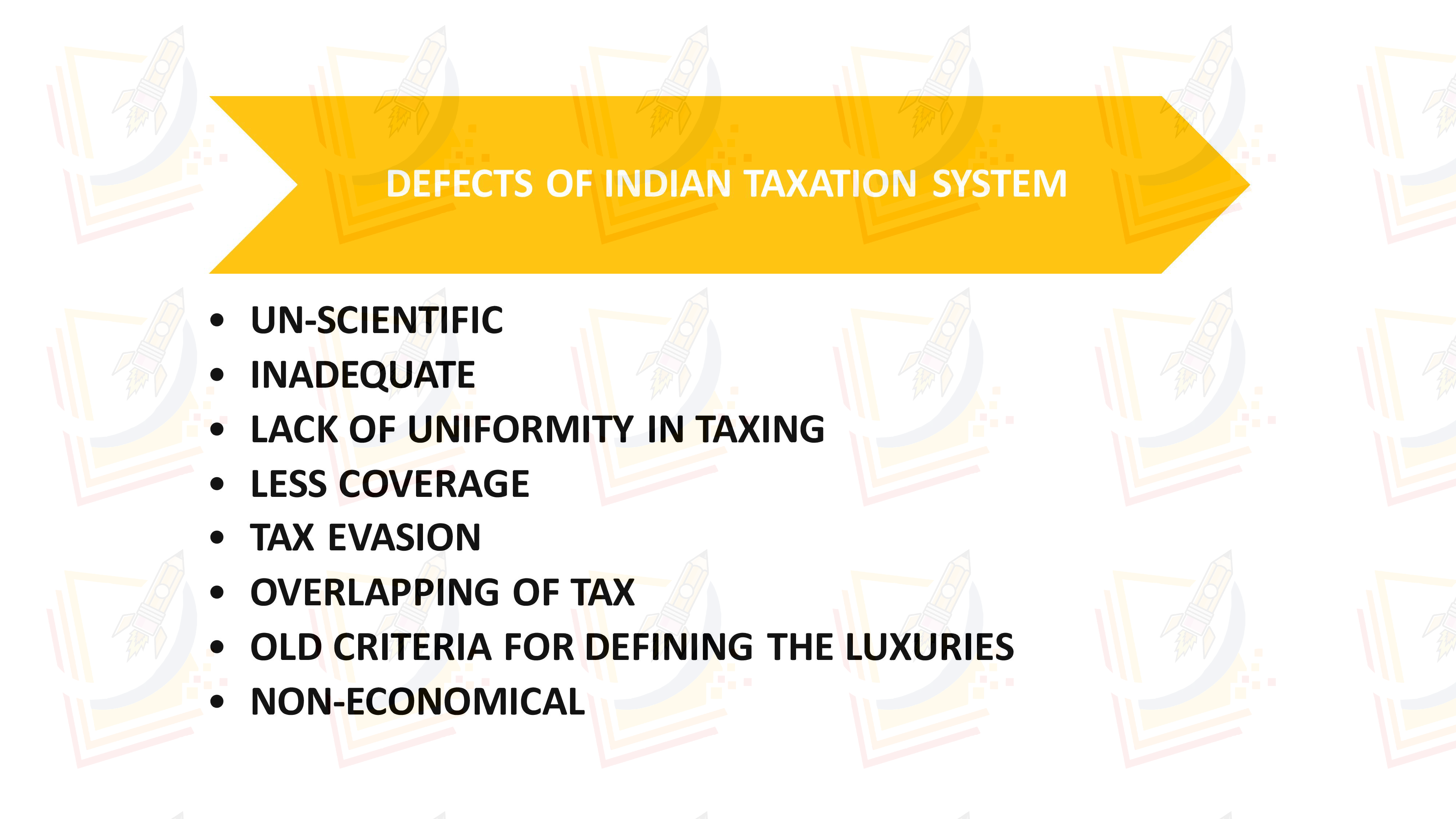INTRODUCTION
The objective of Indian taxation system, according to planning commission, is to
- Mobilize resources for economic development.
- Encourage saving and investment for the purpose of capital formation.
- Reduce inequalities of wealth and income.
- Augment the income of the centre and the states
- Regulate consumption in order to check.
PRINCIPAL FEATURES OF INDIAN TAX STRUCTURE

- MULTIPLE TAXATION SYSTEM :- A mix of direct and indirect is found in Indian Taxation system. It includes many direct taxes like Income tax, wealth tax, and indirect taxes like excise duty, custom duty.
- SHARE OF DIRECT AND INDIRECT TAXES :- Earlier there was a system of Indirect taxation System. The importance of excise duty is highest among indirect taxes.
- PROGRESSIVE :- Indian taxation system is based on the principle of progressiveness. Rates of direct taxes are progressive in nature i.e. persons with low income are taxed at low rates and those with high income are taxed at higher rates.
- LESS COVERAGE :- In Indian, very small Number of people are burdened with tax. FOR EXAMPLE :- less than one percent of population pays tax.
- TAX EVASION :- officials responsibility of collection of taxes are not very effective. So that the people success in evasion of tax. They either do not pay tax or pay very low amount of tax.
- NON-ECONOMICAL :-Indian taxation system is not economical. New taxes like gift tax, wealth tax, estate tax, etc do not yield much revenue, but to collect same lot of experience is incurred.
- COMPLICATED :- Indian taxation system is not based on the principle of simplicity. Complicated of new taxation system.
- SECTORAL IMBALANCE :- Indian Taxation system suffers from sectoral imbalance. Burdens of taxes are implied more on middle or poor persons.
DEFECTS OF INDIAN TAXATION SYSTEM

- UNSCIENTIFIC :- Indian taxation system is unscientific. It is neither scientific nor based on any pre determined plans. In this taxation system are sectors are integrated.
- INADEQUATE :- In this if the tax are not properly planned the expenditure increase and the revenue decrease in terms of fiscal deficit. Tax is levied on mass consumption goods.
- LACK OF UNIFORMITY IN TAXING :- In India goods are taxed at higher rate than tax rate or services. Goods are taxed through excise duty and value added tax and services are taxed through services only.
- LESS COVERAGE :- In India very small number of people are burdened with tax. Most of the population is exempt from the payment of tax.
- TAX EVASION :- No official body may check on tax payment so many people’s are succeeds in tax evasion and even the people are succeeds in tax evasion.
- OVERLAPPING OF TAX :- In India the central excise duty and state value Added tax has been overlapped. Excise duty is imposed on raw material and manufacturing goods at factory level. When this goods come to market for sale then value added tax will be charged.
- OLD CRITERIA FOR DEFINING THE LUXURIES :- the government of India has been continuously increase taxes, on the plea of reducing the consumption of luxuries goods and then tax burden are evade on the middleman.
- NON-ECONOMICAL :- Indian taxation system is non economical. New taxes are gift taxes; wealth taxes etc. do not yield much revenue, but to collect the same at lot.
